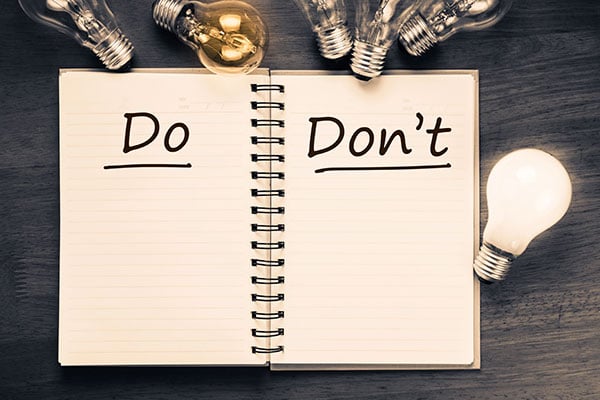Hurricane and monsoon season officially starts in early June, which means now is the perfect time to make sure that your community is properly prepared. Below are tips and some guides for your community, both to help your Association and your Residents to be prepared.
It's easy to become complacent, especially if you have not had a problem in a couple of seasons. In fact, there are some things you should be doing every year to make sure your community is as prepared as possible for a major storm. In addition to having a solid disaster plan, consider the following:
- Double-check your insurance. Make sure your coverage is up to date and reflects the current value of your building, and that you have the right kind of coverage. Make sure that somebody has a copy of the policies off-site and that if the area is evacuated they take those documents with them. A building manager is generally an ideal person, but you could also talk to a board member.
- Distribute a disaster prep guide to residents that include the list of things they should have for a disaster. There are disaster prep and evacuation kit checklists. Make sure owners are encouraged to take photos of their unit, keep their social security card, passport, and insurance policies in their evacuation kit, and stock up on water, food, propane, and flashlight batteries before a disaster. (Using candles for lighting during a power outage should be avoided). If your community consists of houses, then encourage acquiring a generator and a solar or hand-crank phone charger.
- Take photos of the common areas, date stamping them. Store them off-site in a safe space. This will help you in the event of an insurance claim.
- Schedule a roof inspection to fix any minor damage that might be aggravated during a storm. Also, check the health of any trees. Dead trees should be removed before hurricane or monsoon season starts.
- Make sure you have a sufficient budget for disaster prep. This might include covering assistance to residents, making repairs to communal areas after the storm, etc.
- Find residents who are willing to volunteer in the event of a disaster. Do you have owners who are willing to help less able-bodied individuals? Maybe to find room in their car for an older resident who is unable to drive?
- Purchase battery-operated walkie-talkies for communicating with employees and vendors. Make sure you have enough batteries and test them frequently.
- Stock up on clean-up supplies. Include supplies for fixing flat tires, tarps, duct tapes, sturdy shoes and gloves, water, fuel, ice, and cash.
Your disaster preparation plan should be proactive and should take into account the kind of disasters that might hit your community and also such things as first responder response time.
The plan should include the following:
- A close down plan for the building. When an evacuation is announced, you should make sure that pool pumps are turned off and elevators held on higher floors. Make sure your elevator's coding allows for this if there is a risk of flooding. Turn off electricity and water to the building. Make sure that you use hurricane shutters and the like on common buildings such as clubhouses.
- When an evacuation should be called and how to notify owners of a mandatory evacuation. Make sure somebody is available to post to the website and possibly to call residents. Also, have a pre-prepared voice mail message for incoming calls.
- How to assist elderly or disabled residents or those with very young children in the event of an evacuation.
- Who is responsible for what in the event of a disaster.
- Evacuation routes both for the building and the area. Hurricanes can affect a wide area and owners may have to evacuate some distance.
- The locations of shelters for both humans and pets.
- Contact information for first responders and aid organizations.
- Contact information for your insurance company.
- The staging area where debris can be left. Make sure you have a contract for dumpsters.
- The location of your prepared remote office site so you can re-establish office routine.
- A priority repair and reinstatement list.
This plan should be distributed to new residents, with a reminder sent annually, ideally in the spring. Having a good disaster plan is vital when going into hurricane or monsoon season. You should always be ready for a disaster, but this is the time when you should go over your disaster preparation and make sure you are ready for the next storm.








